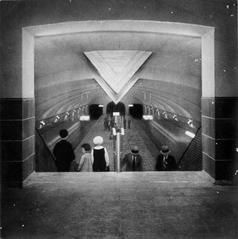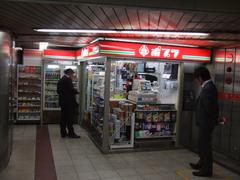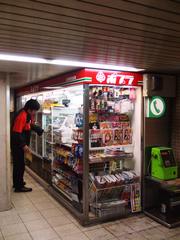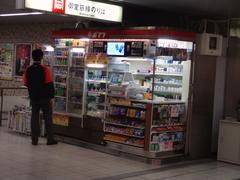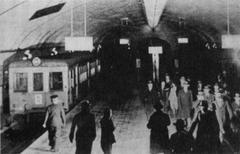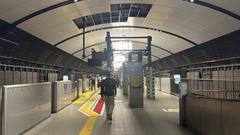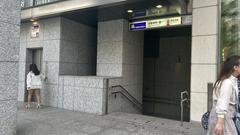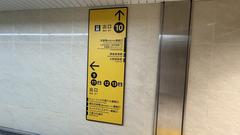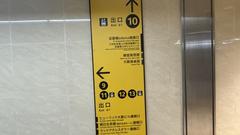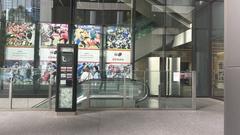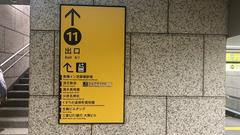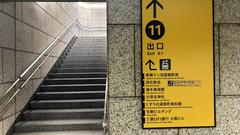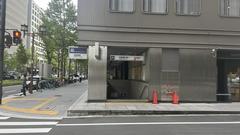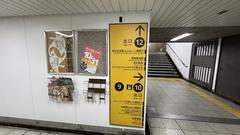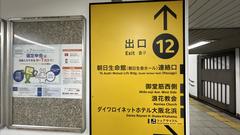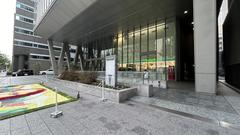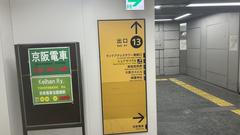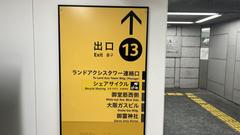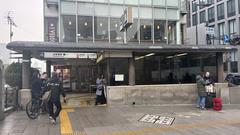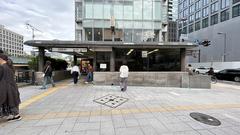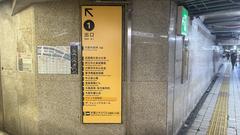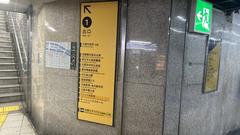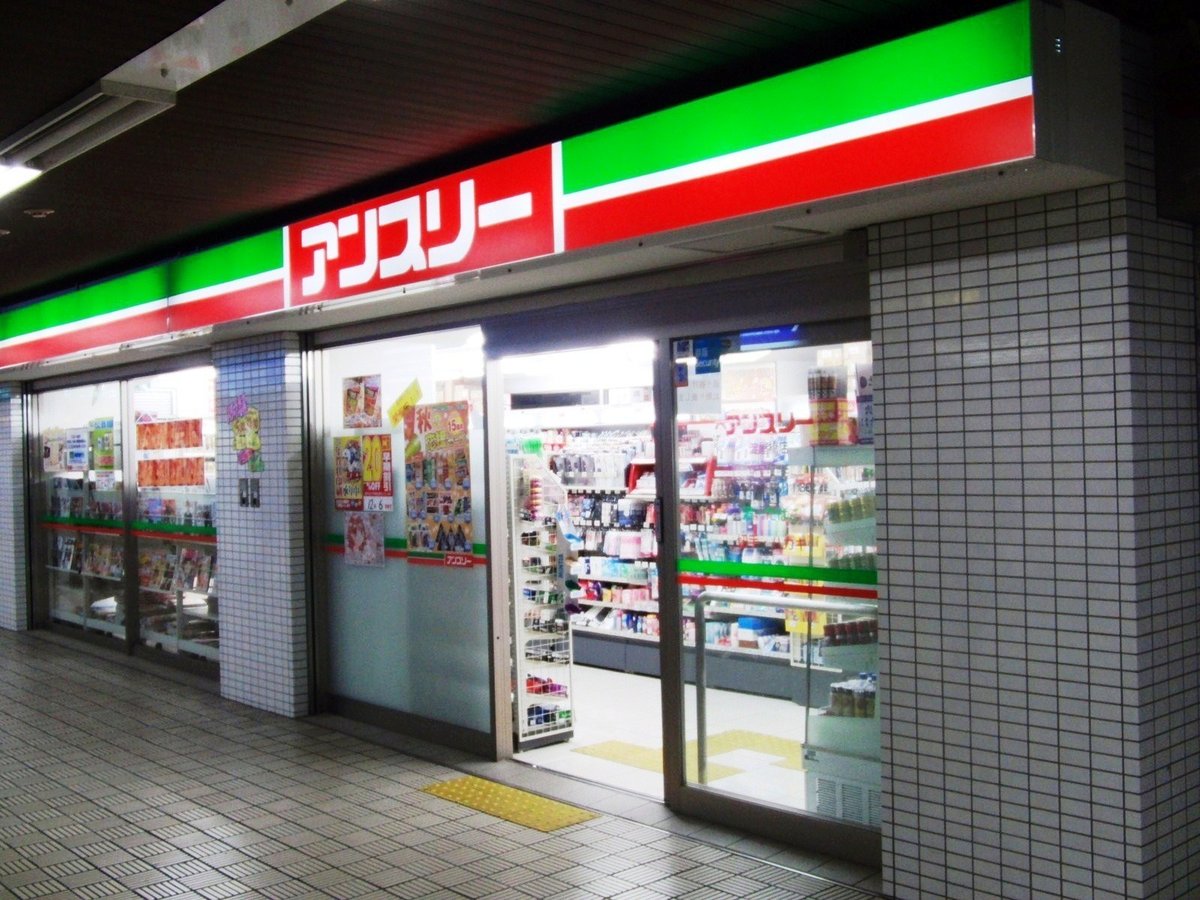
Yodoyabashi Station Osaka: Visiting Hours, Tickets, and Comprehensive Travel Guide
Date: 14/06/2025
Introduction
Yodoyabashi Station is a pivotal transportation hub and cultural gateway in the heart of Osaka, Japan. Strategically situated at the northern terminus of Midosuji Avenue, it seamlessly connects the Osaka Metro Midosuji Line and the Keihan Electric Railway Main Line, granting visitors access to a wealth of historical sites, architectural landmarks, and urban experiences. The surrounding district, once established by the influential Yodoya merchant family during the Edo period, is steeped in history—from the creation of the iconic Yodoyabashi Bridge to the world’s first organized futures market at the Dojima Rice Exchange (osaka-chushin.jp). Today, Yodoyabashi is defined by its blend of Meiji, Taisho, and Showa era Western-style architecture, ongoing redevelopment, and proximity to major Osaka attractions (metronine.osaka; travelers.whg-hotels.jp; yodoyabashi-east-project.jp).
This guide offers a detailed look into Yodoyabashi’s origins, key historical transitions, current facilities, visiting information, and practical travel tips for making the most of your Osaka visit.
Contents
- The Merchant Roots and Urban Foundations
- The Bridge and Business District Development
- Modernization in the “Age of Great Osaka”
- Railway Arrival: Yodoyabashi Station’s Inception
- Visiting Hours and Ticket Information
- Urban Redevelopment and Future Vision
- Architectural Heritage and Nearby Landmarks
- Station Guide: Layout, Facilities, and Accessibility
- Dining, Shopping, and Riverside Leisure
- Art, Museums, and Cultural Activities
- Practical Travel Tips and Frequently Asked Questions
- Summary Table: Key Station Facilities
- Sources and Further Reading
The Merchant Roots and Urban Foundations
Yodoyabashi’s historical legacy is deeply connected to Osaka’s rise as a commercial powerhouse during the Edo period. The area takes its name from the Yodoyabashi Bridge, built by the Yodoya merchant family—renowned timber dealers whose business acumen fostered the development of Nakanoshima, a sandbank that rapidly evolved into a financial nucleus. Their estate, located on the bridge’s southern side, became home to the Dojima Rice Exchange, the world’s first organized futures market, which set rice price benchmarks for all of Japan (osaka-chushin.jp).
The Bridge and Business District Development
The Yodoyabashi Bridge, spanning the Tosabori River, was essential for commerce, enabling the efficient flow of goods and people. The prosperity it brought is still evident in the grand Western-style buildings that line the district. After being destroyed in an 1885 flood, the bridge was reconstructed in its current alignment, symbolizing Osaka’s commitment to modernization (travelers.whg-hotels.jp).
Modernization in the “Age of Great Osaka”
In the early 20th century, Osaka entered its “Age of Great Osaka” (Dai Osaka Jidai), a period marked by rapid industrial and urban growth (metronine.osaka). Yodoyabashi became a showcase for grand Western-style architecture, including the Neo-Renaissance Osaka City Central Public Hall (1918), the Bank of Japan Old Osaka Branch, and the exclusive Osaka Club. Many of these buildings remain cultural landmarks, reflecting the city’s cosmopolitan spirit and ambition.
Railway Arrival: Yodoyabashi Station’s Inception
The advent of railways solidified Yodoyabashi’s role as a vital urban gateway. The Keihan Main Line, operational since 1910, linked Osaka with Kyoto and enhanced the district’s accessibility (japanesewiki.com). Yodoyabashi’s location at the north end of Midosuji Avenue positioned it as a prime entry point to Osaka’s business and financial core. The station has since been modernized with advanced safety features and improved accessibility.
Visiting Hours and Ticket Information
- Operating Hours: Approximately 5:00 AM to midnight, in line with Osaka Metro and Keihan Railway schedules.
- Ticket Purchase: Tickets are available at multilingual vending machines and staffed counters. IC cards (ICOCA, Suica, PiTaPa) are accepted for contactless payment.
- Tourist Passes: Consider the Kansai Thru Pass or Keihan Sightseeing Pass for unlimited travel on regional lines (osakametro.jp).
Urban Redevelopment and Future Vision
Yodoyabashi continues to evolve with large-scale redevelopment. The upcoming Yodoyabashi Station One skyscraper, set for completion in 2025, will offer office, retail, co-working, and observation spaces, directly connected to both rail lines (yodoyabashi-east-project.jp; chuo-nittochi.co.jp). The project emphasizes sustainability and resilience, targeting international green building certifications.
Architectural Heritage and Nearby Landmarks
Osaka City Central Public Hall: Open from 9:30 AM to 9:30 PM (closed Mondays/holidays). Free for general entry; event admission varies (metronine.osaka).
Bank of Japan Old Osaka Branch: Functions as a museum/art gallery (10:00 AM–5:00 PM, closed weekends/holidays) (travelers.whg-hotels.jp).
Osaka Club: Private, but occasionally open for public tours.
Nakanoshima Park: Open daily, 5:00 AM–11:00 PM, featuring a rose garden and riverside paths (osaka-info.jp).
National Museum of Art, Osaka and Osaka Science Museum: Both are within walking distance and offer rotating exhibitions.
Station Guide: Layout, Facilities, and Accessibility
Station Layout
- Osaka Metro Midosuji Line: Island platform (B2F), with multiple ticket gates on B1F.
- Keihan Main Line: Island platform (B2F), multiple ticket gates (East, Central, West) on B1F.
- Transfers: Clearly marked; the shortest connection is via the north gates.
Facilities
- Barrier-Free Access: Elevators, escalators, tactile paving, and accessible restrooms throughout.
- Amenities: Coin lockers (B1F), convenience stores (open until 00:20), ATMs, free Wi-Fi, baby care rooms, AEDs, and a lost & found counter.
- Surface Access: Numbered exits to Midosuji Avenue, Osaka City Hall, Kitahama, taxi stands, and bus stops.
- Staff Support: Multilingual assistance and tourist information available during operating hours.
Dining, Shopping, and Riverside Leisure
- Dining: Yodoyabashi and Kitahama offer refined Japanese and international cuisine, with riverside terraces and retro cafés in historic buildings.
- Shopping: Specialty shops in Kitahama, department stores in Umeda (one stop south), and Tenjinbashi-suji Shopping Street for local snacks and souvenirs.
- Leisure: Boat cruises on the Dojima/Tosabori rivers, jogging/cycling paths, and seasonal events in Nakanoshima Park.
Art, Museums, and Cultural Activities
- Nakanoshima Museum of Art, Osaka: Modern and contemporary art, open 10:00 AM–6:00 PM (closed Mondays).
- National Museum of Art, Osaka: Underground venue, open 10:00 AM–5:00 PM (closed Mondays).
- Osaka Science Museum: Family-friendly science exhibits and planetarium, 9:30 AM–5:00 PM (closed Mondays).
Practical Travel Tips
- Best Time to Visit: Spring (cherry blossoms) and autumn (fall foliage) for mild weather and festivals.
- Accessibility: All major attractions and the station are wheelchair-friendly.
- Navigating Rush Hours: Off-peak travel (after 9:30 AM, before 5:00 PM) is recommended for a relaxed experience.
- Tickets for Attractions: Most can be purchased on-site or via official websites; check for closures on Mondays or holidays.
- Guided Tours: Walking tours focusing on history and architecture are available—book in advance for English-language guides.
Frequently Asked Questions (FAQ)
Q: What are Yodoyabashi Station’s opening hours?
A: The station operates from around 5:00 AM to midnight daily.
Q: How do I buy train or attraction tickets?
A: Use multilingual vending machines or staffed counters at the station; tickets for attractions are available on-site or online.
Q: Is the station accessible for wheelchair users?
A: Yes, with elevators, ramps, and accessible restrooms.
Q: Are there guided tours of the area?
A: Yes, local operators offer tours highlighting historical sites and architecture.
Q: What is the best season to visit?
A: Spring and autumn for pleasant weather and seasonal events.
Summary Table: Key Facilities at Yodoyabashi Station
| Facility | Location | Details |
|---|---|---|
| Platforms | B2F | Midosuji: 1 island (2 tracks); Keihan: 1 island (4 tracks) |
| Ticket Gates | B1F | Multiple, including accessible gates |
| Elevators/Escalators | All levels | Barrier-free access throughout |
| Restrooms | B1F | Accessible and with baby care facilities |
| Coin Lockers | B1F | Near main concourse |
| ATMs | B1F | Domestic and international cards supported |
| Convenience Stores | B1F | Open from first train until 00:20 |
| Wi-Fi | Throughout | Free public Wi-Fi |
| Taxi/Bus Connections | Surface level | Taxi stand and bus stop at main exits |
| Lost & Found | B1F | Staffed counter |
| AEDs | B1F/B2F | Multiple locations |
For maps and up-to-date details, refer to the official Keihan Yodoyabashi Station guide (PDF).
Sources and Further Reading
- Yodoyabashi Station and District: Visiting Hours, Tickets, and Osaka Historical Sites Guide (osaka-chushin.jp)
- Yodoyabashi Station and District: Historical and Architectural Insights (travelers.whg-hotels.jp)
- Modernization and Architecture of Osaka (metronine.osaka)
- Keihan Main Line and Yodoyabashi Station Details (japanesewiki.com)
- Official Osaka Metro Website (osakametro.jp)
- Yodoyabashi Station One Redevelopment Project (yodoyabashi-east-project.jp)
- Chuo Nittochi Corporation Urban Development News (chuo-nittochi.co.jp)
- Keihan Railway Official Yodoyabashi Station Guide (PDF) (keihan.co.jp)
- Osaka Tourism Official Information on Nakanoshima and Cultural Sites (osaka-info.jp)
- Audiala App for Osaka Travel Updates (Audiala app)
For the latest updates, travel tips, and guided tours, download the Audiala app and follow our social media channels. Dive into the vibrant history and dynamic future of Osaka—let Yodoyabashi Station be your gateway!

